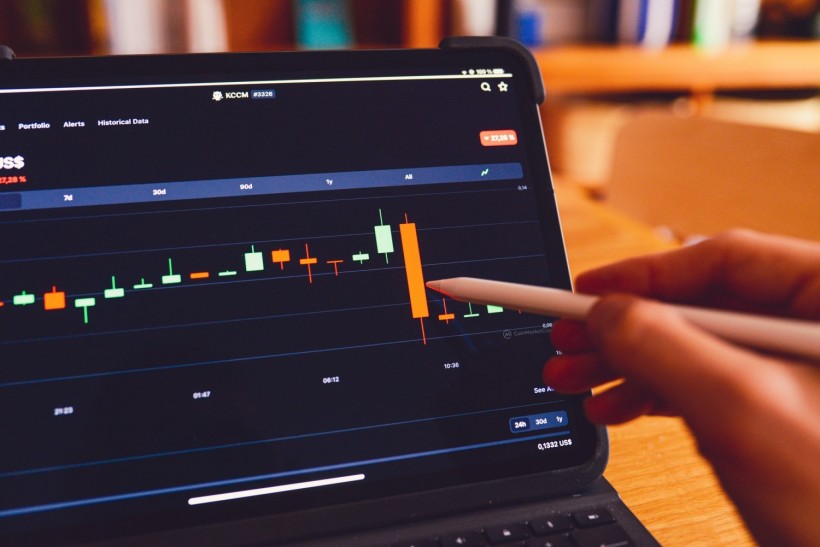How To Trade with the Doji Candlestick?

In this article, we will be writing about what Doji Candlestick is, its interpretation, how to trade with it, and how it might show.
What Is the Doji?
The Doji is a Japanese candlestick pattern that occurs when the close of a security's opening and closing price are close to each other. Traders favor a Doji for its indecision. The key features of Doji candlesticks are its long body with a bit of natural body, a broad handle at both open and close prices, and relatively thinner shadow lines in addition to the regular three-line version.
What does a Doji candle mean? Doji candlesticks are usually associated with an immediate reversal in the market trends. Traders who use technical indicators such as the MACD try to trade only with Doji candlesticks because they provide a good entry opportunity on short trades. A Doji appears when the security's open and close are at the same price. Although a dog is only a single candle, it does have a more exaggerated shape than other candles.
When Should I Trade the Doji?
This candlestick pattern is best used as an indecision indicator. Sometimes, traders can use Dojis as continuation signals when they form at the top or bottom of an existing trend. However, this pattern will often provide you with an excellent opportunity to trade against the trend and use it to set up a counter-trend position. So while Doji can be used to fight against the trend, it often provides an excellent opportunity to look at the "other side" and gauge whether you should continue on your way down or go in another direction.
When Is a Doji Indicator Useful?
This pattern is only valid when there is not enough volume to determine whether the price will close higher or lower. In other words, this indicator's usefulness is truly limited to short-term trading. If you're only looking for long-term signals, you'll want to look elsewhere.
How Do I Trade the Doji?
The most common way to trade this pattern is to open the next candle. In other words, the price opens above or below the Doji candlestick or near equal; this is a good indication that the price will continue in that direction. If, however, the price opens very near the Doji, it is likely that we will see it reverse, i.e., go in the opposite direction. One important thing to remember is that you can only use Dojis as an entry or exit signal if they form at the top or bottom of an existing trend.
For example, if the price is in a long-term uptrend and then forms a Doji bar with a long upper wick and a narrow lower wick, it could be used as an entry signal. Because Dojis can be difficult to time and often form in the initial stages of a trend, traders who are not familiar with them may take them as a sign that the trend is over or that price will reverse. To avoid giving away your plans or prematurely entering trades based on Dojis, be sure to look at previous Doji history and other indicators to gauge whether you should stay in your current trade or not.
The Bottom Line
Dojis is a contrarian indicator, and trading with this pattern can be highly profitable. They can use them for trading conservatively or against the trend. They provide a great way to enter and exit trades before most traders are aware of the potential opportunity. However, you should only use Dojis if you're willing to trade against the trend because it is their natural inclination.
As always, keep in mind that past performance does not guarantee future results. The Doji is a classic candlestick pattern. It occurs when the actual body of the candle closes precisely halfway between the opening and closing price. Like other reversal patterns, it signals that a trend has ended or reversed.
Simply put, this pattern shows that the price of a security has been in a continuous range. It occurs when the close of one day's trading is the same as yesterday's open, with the mid-point of the range closer to today's close than yesterday's open. The closing price would be one day away from a previous high or low. The candlestick will have a slight natural body and a long but not too long shadow line.
Benefits of trading a Doji?
A Doji candlestick is most often used as an entry or exit signal when the price is in a range and volume is insufficient to determine whether it will close up or down. Therefore, traders should not use this pattern as a number one indicator of market behavior. The candlestick shows that there are more buyers than sellers at any given time. It can, however, be a helpful indicator when used in conjunction with other technical analysis tools. Taking advantage requires understanding patterns and knowing what to look for, and awareness of the strengths or weaknesses of the overall market and the market's volatility.
A Doji candlestick does not necessarily signal that security is about to change in price direction immediately, but it does confirm the indecision in the marketplace.
Conclusion
Buy and hold is not bad, but nothing beats moving in the market. Doji can create opportunities or not. Either way, you should be aware of the risk that comes with it and its potential rewards. Good luck. The Doji candlestick is the most famous reversal pattern among the traders and investors because it is one of a few that does not have a clear signal line. Many fail to distinguish between a Bullish and Bearish Doji pattern. They can find this pattern at the bottom of a declining market, but this is not always the case. You can also use this indicator to predict a reversal in bullish trends. This strategy is most successful when used in conjunction with other indicators.
Subscribe to Latin Post!
Sign up for our free newsletter for the Latest coverage!














